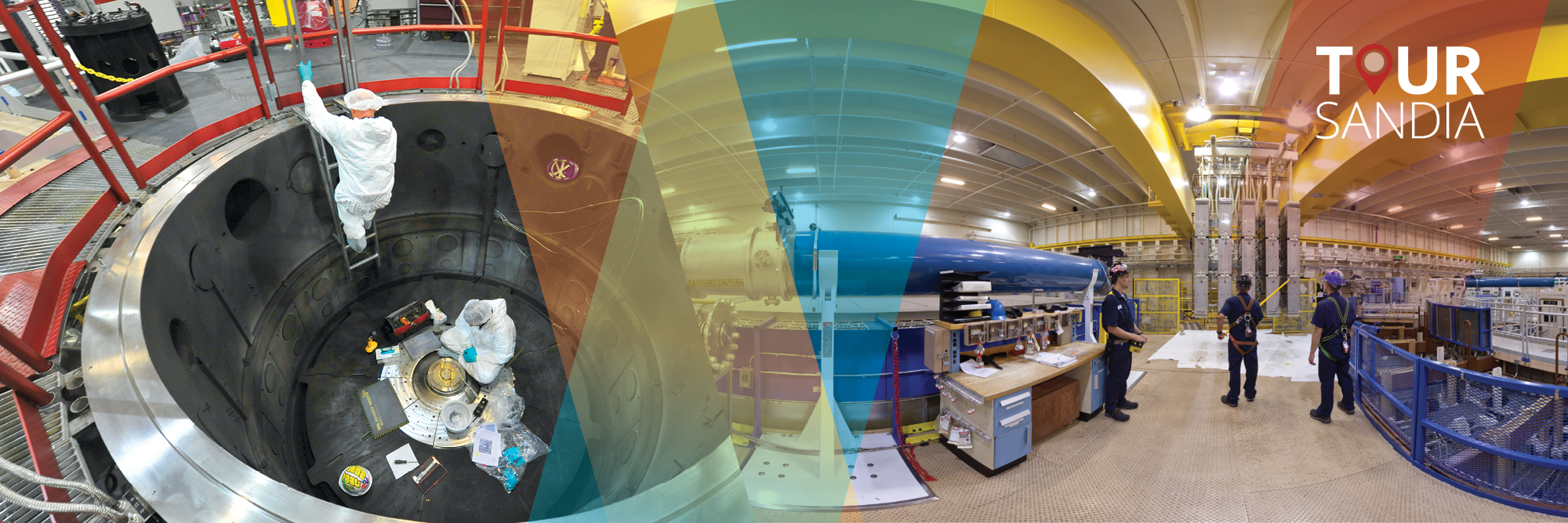Overview
Most of the yield from our nuclear weapons (NW) comes from matter in a high energy density (HED) state, where pressures exceed 1 million times that of the Earth's atmosphere and temperatures exceed those at the center of the sun. Outside of underground NW testing, the only way to access the HED state is to use high-energy/high-power lasers or pulsed power machines.
Sandia's Z Machine is one of three flagship facilities in the U.S. Inertial Confinement Fusion (ICF) Program and the world's largest and highest-current pulsed power machine. Data from the Z facility is used to validate HED physics models for the safety, security, and effectiveness of our stockpile and to evaluate the survivability of our weapons in hostile radiation environments.
Key Facts:
- Z Compresses Energy in Space (109 X) and Time (109 X) to generate HED conditions.
- Uses currents of about 26 million amps to reach peak X-ray emissions of 350 terawatts.
- X-ray output of 2 megajoules or 1,000 times the electricity of a lightning bolt.
- Z fires approximately 150 shots/year and approximately 10% of the shots are completed in collaboration with academic partners.
Z's program includes three major experimental areas, and each contribute to the understanding of how materials behave while also feeding insights into astrophysics and planetary science.
- Dynamic material properties experiments-materials are shocked and or squeezed to see how they react to high pressures and temperatures.
- Radiation effects sciences-the world's most powerful burst of X-rays is used to test the effects of radiation on materials.
- ICF experiments-electrical energy hits a target at Z's core and creates a highly compresses, super-heated plasma in which hydrogen isotopes are fused together to release energy.
